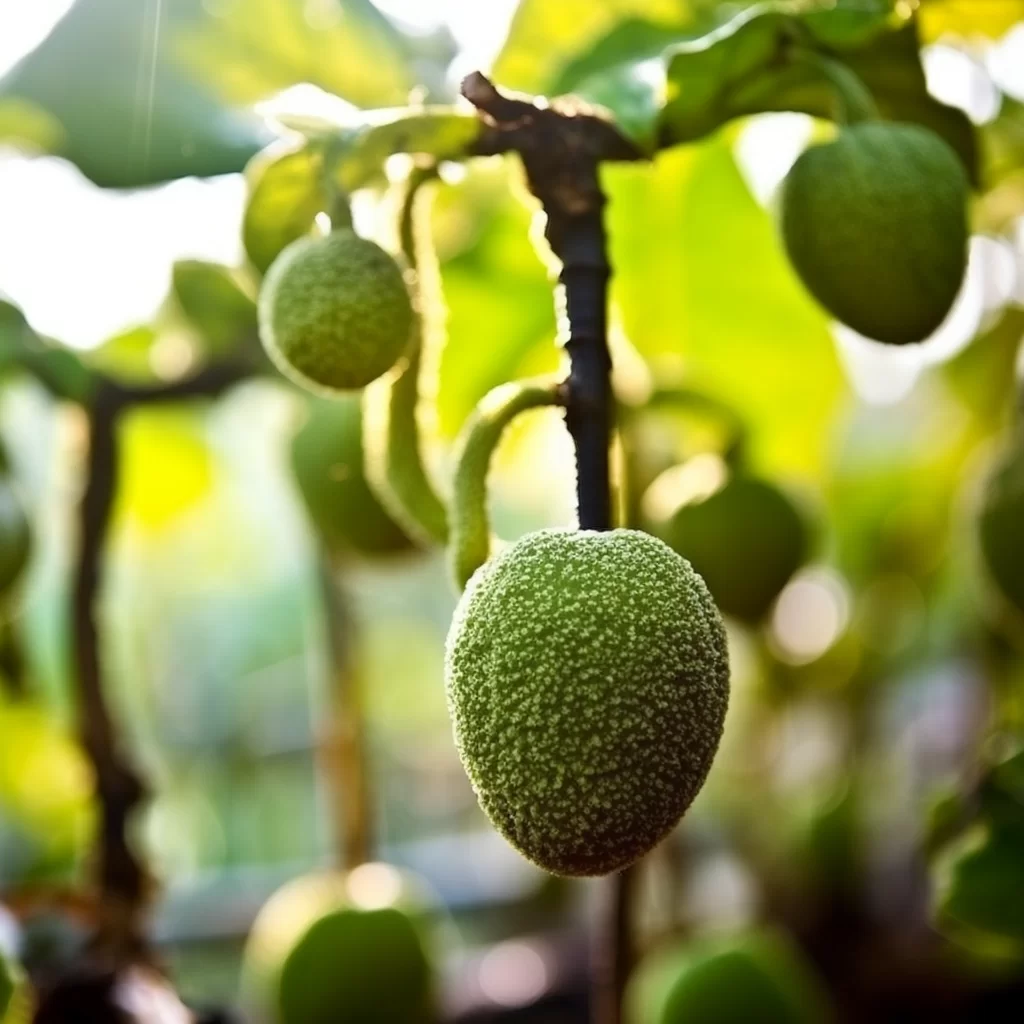Story of Day :
Contents
The Konjac Plant: A Complete Guide and Care Tips
Are you searching for a distinctive plant to enhance your garden? The konjac plant would be an excellent choice.
Also known as devil’s tongue or Amorphophallus konjac, this plant is originally from Japan and China but has become popular worldwide due to its fascinating appearance and potential health advantages.
The konjac plant is not only visually appealing, but it also has numerous health benefits.
It contains glucomannan, a type of fiber that aids in digestion by absorbing water and increasing stool bulk.
This fiber may also help control blood sugar levels and lower cholesterol levels in the body.
Furthermore, konjac plants are easy to care for since they do not require frequent watering or fertilizing and can thrive in almost any gardening environment.
Consider adding this unique plant to your garden today!
Appearance
The konjac plant grows from a corm, which is similar in appearance to a bulb.
The leaves are large and round with long petioles that attach them to the stem.
The stem itself can grow up to 3 feet tall and has a maroon color.
At the top of the stem is an inflorescence that produces small flowers, but it’s not particularly showy.
This plant is one of a kind because of its exceptional tuberous root system.
Unlike many other plants, this one’s roots can grow up to an impressive 10 pounds each! These roots are shaped like oblong potatoes with an outer layer that is brown in color and a white inner part.
It’s fascinating how the roots themselves can grow so big, especially since most plants’ underground structures tend to be much smaller. The unique root system of this plant not only makes it stand out among others but also contributes to its overall structure and growth.
The unique root system of this plant not only makes it stand out among others but also contributes to its overall structure and growth.
The sheer size and shape of these roots play an essential role in the plant’s ability to absorb nutrients from the soil effectively and store them for future use.
Moreover, as they continue to grow larger with time, they provide added stability for the above-ground parts of the plant.
All in all, it’s quite remarkable how something as seemingly insignificant as a plant’s root system can make such a significant impact on its overall health and appearance!
Care Tips
If you’re interested in growing konjac plants in your garden, here are some care tips:
- Climate: Konjac plants prefer warm temperatures between 68-86°F (20-30°C) but can tolerate cooler climates if they are protected from frost.
- Sunlight: These plants prefer partial shade or filtered sunlight because full sun can scorch their leaves.
- Soil: Konjac plants need well-draining soil that’s rich in organic matter.
They also prefer slightly acidic soil with a pH between 5-6.
- Irrigation:Konjac Plants should be watered regularly, but don’t overwater them.
These plants can handle short periods of drought, but prolonged dry spells can stress them.
- Fertilizer: Feeding your konjac plant with a balanced fertilizer once every month during the growing season will help promote healthy growth.
- Pruning:Konjac plants do not require much pruning other than removing dead or damaged foliage in spring and summer months
Health Benefits
The konjac plant has been used for centuries in traditional Chinese medicine due to its potential health benefits.
The root contains glucomannan, a type of dietary fiber that has been shown to aid in weight loss by promoting feelings of fullness and reducing calorie intake.

Aside from aiding in weight loss, glucomannan has been found to be beneficial in regulating blood sugar levels.
Additionally, it may also improve cholesterol levels.
While these benefits are promising, more research is required to fully comprehend the extent of its advantages.
Nonetheless, the potential of glucomannan as a supplement for those struggling with blood sugar and cholesterol management is an exciting prospect that could provide significant aid for patients seeking natural remedies.
Not only does glucomannan offer benefits for weight loss, but studies suggest that it can also help regulate blood sugar levels and lower cholesterol.
While there’s still a need for further research to determine its precise effects on these health issues, initial findings show promise in utilizing this supplement as a natural method of support towards better health outcomes.
The possibility of using glucomannan as part of an overall wellness regimen is an exciting development in alternative medicine that could help individuals take control over their own physical well-being and achieve optimal health outcomes without relying solely on prescription medications or invasive procedures.
Cautions when Handling Konjac Plants
While the konjac plant may have potential health benefits when consumed as a supplement or food ingredient,it should be handled with care.One needs to wear gloves while planting it especially those who are prone allergic reactions.The sap from this plant can cause skin irritation and burns if it comes into contact with your skin or eyes.
It’s also important not to ingest any part of the plant raw as it can cause choking or intestinal blockages.
Conclusion
The konjac plant is an interesting addition to any garden due to its unique appearance and potential health benefits.
Once you get familiar with how they grow and care for them they become relatively low maintenance.Its huge tuberous root system makes it one of the most interesting garden plants.Due caution must also be observed while handling this beautiful yet delicate plant.
